455. The glyph type tapa mea
|
 |
|
tapa mea |
 |
 |
 |
|
Ca3-1 |
Ca3-2 (53) |
Ca3-3 |
|
kiore - henua |
tapamea |
tagata rere ki te toki
- te hau tea |
|
CLOSE TO THE FULL MOON: |
|
May 12
no star listed (52) |
13 (133 = 80 + 53)
ψ Persei (53.1)
ACRUX (α
CRUCIS)
|
14
δ Persei (54.7) |
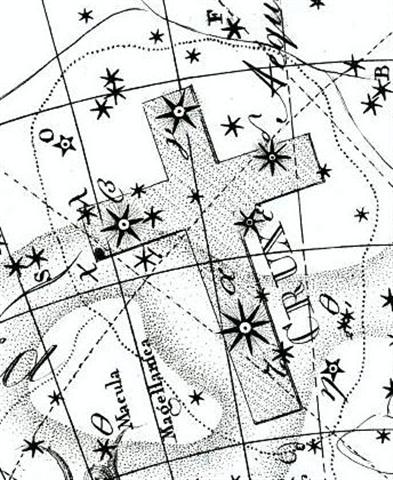 |
 |
 |
 |
 |
 |
|
Ca3-4 |
Ca3-5 |
Ca3-6 |
Ca3-7 |
Ca3-8 (59 = 2 * 29½) |
|
kiore ki te henua |
ihe tapamea |
e tagata mau toki
ki te henua |
e hokohuki mau ki
te matagi |
kiore i te henua |
|
Tapa. 1.
Side, corner, edge; he-hakarere a
te tapa, to leave aside, to
abandon; a te tapa mata'u o te
haga, on the right-hand side of
the bay. 2. Tapa mahute,
piece of mahute material;
this term is very common nowadays,
but it seems probable that it was
borrowed from the Tahitian in
replacement of parehe mahute.
3. To recount the years, the
months; to recount happenings of
many years ago, in verses called
manu, in which a murderer
confided his crime to his victim's
relatives; the murderer himself
asked a brother or a friend to
compose those verses: e tapa koe
itooku manu, compose my manu.
The expression tapa ite manu
was also used of a group of people
expressing the desire to kill
someone. 4. Tagata tapa ta'u,
according to traditions, this term
referred to the scribes who recorded
births on the tablets. Vanaga. 1.
Border, fringe, edge, groin, cloth,
clothing, dress, garment. Tatapa,
lateral, bank. Tapatapa,
edge. P Mgv.: tapa, the edge
of the bast cloth, bast cloth in
general. Mq.: tapa, fringe,
cloth. 2. To name, to mention, to
count, to calculate, to reckon, to
number, to figure up, to
recapitulate; tapa ki te igoa,
to take a census; tapa igoa,
list. Tatapa, to count, to
number, to reckon. Tapatapa,
to mention. P Mgv.: tapa, to
give a pet name. Mq.: tapatapa,
to recite, to invoke; tatapa,
to take the name of some one, to
announce by name. Ta.: tapa,
to call by name. Churchill.Mq.:
Tapaau, coconut leaf plaited to
serve as a mat. Sa: tapa'au,
a coarse coconut leaf mat.
Tapatai, a dweller on the
strand. Ma.: tapatai, beach.
Churchill.
Kapa¹, adj. Haw.,
rustling, rattling;
s.
cloth made of bark, cloth of any
kind. Sam.:
tapa,
to beckon with the hand, to demand;
s. the white border of a siapo;
tapa-au, mat made of
cocoa-nut leaf. Tong.,
tapa,
id.;
kapa-kapa, to flap
with a noise as wings of birds.
Marqu.,
tapa, bark cloth.
Tah.,
tapa-ie, envelop in
leaves;
apa, the lining of a
garment;
apa-a, thick cloth made
by men, not by the women; 'apa'apa,
to flap as sail or the wings of a
bird. Fiji.,
kava,
a roll of sinnet;
kaba,
to climb. Motu (N. Guinea),
kava,
bark girdle for men. Biaju,
tepoh, a mat. Salayer
(Celebes),
tupur, id. Malag.,
komba, a monkey. Kawi,
kapala, a horse. Sanskr.,
kamp,
to move to and fro, to tremble;
chapala ('i.e.,
kampa-ala',
Benfey), trembling, unsteady, giddy;
châpala, quickness;
kapi
('i.e.,
kamp-i', Benfey), a
monkey. Perhaps
kambala, a wollen
blanket. Greek,
καμπη, bending, winding, as a
river, turn, trick, sudden change.
A. Pictet (Orig. Ind.-Eur., i.
347-348) derives the Greek
καβαλλης, a nag, and other
kindred West Aryan forms for horse
and its varieties, as well as
καπρος, a wild boar, and
caper, a buck, from the Kawi or
obselete Sanskrit application of the
original sense, 'to tremble, rustle,
flap', found in the Sanskrit kap,
kamp, and the Polynesian
kapa, tapa.
Kapa², s. Haw., a
bank, shore, side, as of a river,
lake, wood, or the like. Rarot.,
tapa, id. Tah., apa'apa,
one side of a thing when divided,
the side of a house. Sam., tafa,
the side of a hill; v. to
turn on one side; tafa-fa,
four-sided; tafatafa, the
side; tafa-tasi, one-sided;
tafa-to, perpendicular, steep
as seen from above; tafa-tu,
id., as seen from below. Marqu.,
tapa-hai, coral; kapa-i,
on the side of the sea. Fiji.,
taba, wing, shoulder, branch,
one side. Malg., taf, tafo,
the roof of a house; tambon,
above. Welsh, tab, tav,
an extended surface, a spread;
tob, top, top, crest;
cop, summit. Irish, capat,
head. Armor., kab, id. Lat.,
tabula, board, plank, table;
caput, head. Sanskr.,
kapala, skull, head, either half
of an egg; kapola, cheek, the
temples of the head. Pers., kabah,
elevation, eminence; tabrak,
tabûk, table, flat. Greek,
κεφαλη, head, top, upper end.
Goth., haubith, head. Sax.,
heafod, id.; hafala,
hafula, head, casque. Anc.
Germ., haupit, head;
hufela, the temples. Germ.,
kopf, head. A. Pictet (loc.
cit., ii. 273) refers the
Persian tabrak and the Latin
tabula to Sanskrit sthâ,
or perhaps stabh, tabula,
for stabula, and (i. 308) he
says, speaking of the Sanskrit
kapala, and its West Aryan
relations: - 'J'y trouve un composé
de pâla, protecteur, avec
l'interrogatif ka, dans le
sense laudatif. Quel (bon)
protecteur! on ne saurait mieux
caractériser le rôle naturel du
crâne. Or kapât et kapâ
ou kapa auraient la même
signification; car pât, pâ,
pa, à la fin des composés,
sont synonymes de pâla, et
dérivent également de la racine
pâ, tueri.'
Under correction, the 'quel bon
protecteur' of Mr. Pictet appears to
me a singular and fatal misnomer of
the most prominent and most exposed
part of the body. The original
meaning of the Polynesian word was
probably something raised, spread
out, obtruding, projecting, beyond
or above the common level of things.
Hence such compound words in the
Polynesian as kapa-au, Haw.,
the raised place of the Heiau
(temple), where the image of the god
stood and offerings were laid;
'apa-'au, Sam., a wing;
'apa-'apa, the fin of a fish;
apa-ta, to clap the wings. The
West Aryan forms: Lat., cap-ut,
cap-pilus (capillus);
the Irish cap-at, alongside
of ceap and cap; the
double forms in the Goth. and Sax.,
hau-ith, heaf-od, and
hafa-la, hofu-la, seem
to indicate a different composition
and root for themselves, as well as
the Sanskrit and Greek, than what
Mr. Pictet offers. And the probably
primary sense of 'elevation,
eminence', in the root-word has
survived in the Persian kabah,
the Armorian kab, the Welsh
tob or top.
Fornander. |
|
CLOSE TO THE FULL MOON: |
|
May 15 (365 + 135 = 500)
Al Thurayya-27 (Many Little Ones) /
Krittikā-3 (Nurses of Kārttikeya) /
TAU-ONO (Six Stones)
ATIKS =
ο Persei,
RANA (Frog) =
δ
Eridani
(55.1),
CELAENO (16 Tauri),
ELECTRA (17), TAYGETA (19),
ν
Persei (55.3),
MAIA (20), ASTEROPE
(21), MEROPE (23)
(55.6) |
16 (136)
Hairy Head-18 (Cockerel) /
Temennu-3 (Foundation Stone)
ALCYONE
(56.1),
PLEIONE (28 Tauri), ATLAS (27 Tauri)
(56.3) |
17
MENKHIB (Next to the Pleiades =
ζ
Persei
(57.6)
PORRIMA (γ Virginis) |
18
ZAURAK (The Boat) = γ Eridani
(58.9) |
19
λ Tauri (59.3), ν Tauri (59.9) |
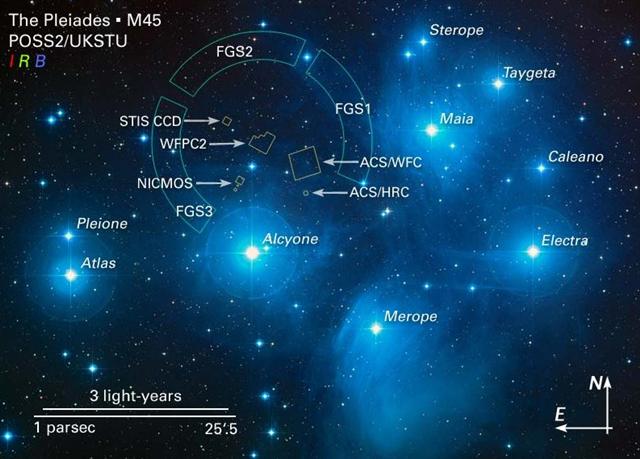 |
|
JAN 19 |
20 |
21 (101 - 80) |
22 → Mercury |
|
MARCH 17 (76 = 140 - 64) |
18 |
19 |
20 (79 = 22 + 3 * 19) |
 |
 |
 |
 |
|
Ca3-9 |
Ca3-10 |
Ca3-11 |
Ca3-12 (63 = 7 * 9) |
|
tapamea tagata
kua iri |
ki te pa |
kua hua |
ki te kotiga |
|
Hua.
1. Testicle. 2.
Figuratively: son, hua tahi,
only son; fruits of the earth;
to grow well (of fruits). 3. To
cause a fight, a quarrel.
Hua-ai, generation, as
lineage of direct descendents;
contemporaries. Huahua,
coccyx of bird, 'parson's
nose': huahua moa,
huahua uha. Huataru,
a creeper (Chenopodium
ambiguum). Vanaga. 1. The
same; ki hua, again, to
continue, to strain, to
struggle, to move, to repeat,
over and above. Mq.: hua,
the same, to return, to
recommence. 2. To bloom, to
sprout; flower, fruit (huaa);
huaa tae oko, huaa
vahio, young fruit; hua
atahi, only son; huahaga,
fruit; mei te huahaga o tokoe
kopu, the fruit of thy body;
tikea huahaga, deceptive
appearance. P Pau.: ua,
to be born; huahaga,
lineage. Mgv.: hua, to
produce (said of trees, grain,
etc.), blooming time of flowers,
abundance of fruit. Mq.: hua,
to produce, to bear fruit. Ta.:
ua, to sprout. Huahua.
1. Tailless fowl. 2. Vein,
tendon, line. 3. Mgv.: huahua,
pimples covering the face. Ta.:
huahua, id. Mq.: hua,
tubercules. Sa.: fuafua,
abscess on hand or feet. Ma.:
huahua, small pimples. Pau.:
Hua-gakau, rupture. Ta.:
áau, entrails. Sa.:
ga'au, id. Ma.: ngakau,
id. Churchill. 1. Fruit. 2. Egg.
3. Tā
hua = 'genealogical writing'
or 'same writing'. Fischer. |
|
CLOSE TO THE FULL MOON: |
|
May 20 (140)
4h (60.9)
JĪSHUĬ (Piled-up Waters) =
λ
Persei
(60.7)
COR
CAROLI (α Canum Ven.)
|
21
υ Persei (61.2) |
22 (21 + 121 = 142)
BEID (Egg) =
ο¹
Eridani
(62.2),
μ
Persei (62.8)
VINDEMIATRIX ( ε Virginis) |
23 (11 * 13 = 143)
Al Dabarān-2 (The Follower)
HYADUM I = γ Tauri
(63.4)
*22 = *63.4 - *41.4 |
|
'April 23 (*60 - * 27 = *33) |
24 |
25 (115 → Mercury → Hermes
Trismegistos) |
26 |
|
... [E:17] On the
twenty-fifth day of the first
month (Vaitu Nui),
Ira and Makoi set
sail; on the first day of June
('Maro'), the bow of
Ira's canoe appeared on the
distant horizon, came closer and
closer on its course, and sailed
along, and finally (one) could
see the (new home) land ... |
|
"April 9 (140 - 41 = 99) |
10 (100) |
11 (*21) |
12 |
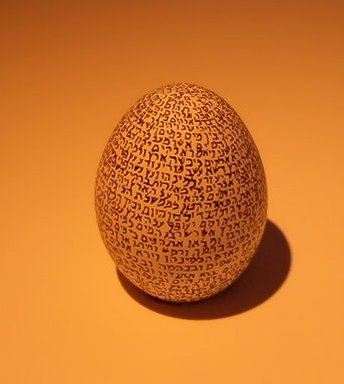 |
|
CLOSE TO THE SUN: |
|
Nov 19 (140 + 183 = 323)
16h (243.5)
ACRAB (Scorpion) = β Scorpii,
JABHAT AL ACRAB (Forehead of the
Scorpion) = ω Scorpii
(243.3), θ Lupi,
RUTILICUS = β Herculis
(243.5),
MARFIK (Elbow) = κ Herculis
(243.7), φ Herculis (243.8)
|
20
ψ
Scorpii (244.6),
LESATH (Sting) =
ν
Scorpii
(244.8) |
21 (*245)
χ
Scorpii (245.1),
YED PRIOR (Hand in Front) =
δ
Ophiuchi,
δ
Tr.
Austr. (245.5) |
22
YED POSTERIOR (Hand Behind) =
ε
Ophiuchi,
RUKBALGETHI SHEMALI (Northern
Knee of the Giant) =
τ
Herculis
(246.6).
δ
Apodis (246.7),
ο
Scorpii (246.8) |
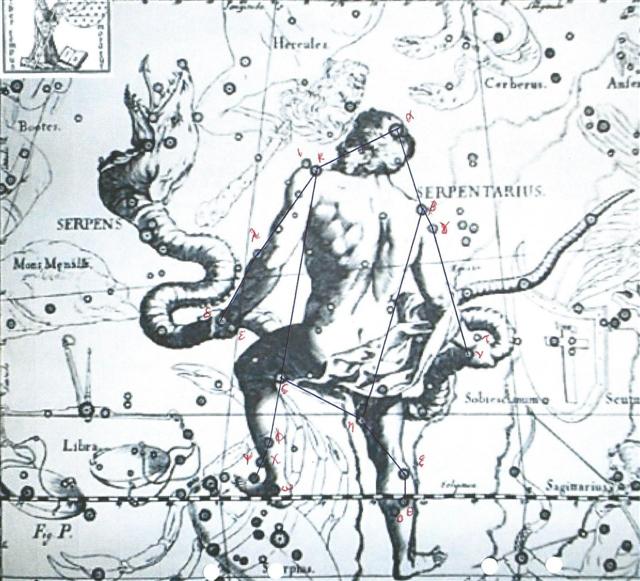 |
occurs 5 times in line Ca3, but
always reversed compared to marking red (mea)
in front:
 |
 |
 |
 |
 |
|
Ca3-2 |
Ca3-5 |
Ca3-9 |
Ca3-14 |
Ca3-17 |
|
16 |
|
JAN 27 |
28 |
29 |
30 |
|
MARCH 25 (84
= 27 + 57) |
26 |
27 |
28 |
 |
 |
 |
 |
|
Ca3-17 (84 - 16 = 68) |
Ca3-18 (69) |
Ca3-19 |
Ca3-20 → Dramasa |
|
tapamea - tagata rima
iri |
te henua te hokohuki |
te kava |
te kiore i te henua |
|
CLOSE TO THE FULL MOON: |
|
May 28 (148)
Rohini-4 (The Red One) /
Pidnu-sha-Shame-4 (Furrow of Heaven)
/
ANA-MURI-2 (Rear pillar - at the foot of
which was the place for tattooing)
ALDEBARAN = α Tauri
(68.2),
THEEMIN = υ² Eridani
(68.5) |
29
no star listed (69) |
30 (→ 5 * 30 = 150)
no star listed (70) |
31
TABIT = π³ Orionis
(71.7), π² Orionis (71.9)
320 (South Pole star, Dramasa) - 71
(Tabit) = 249 (Antares) |
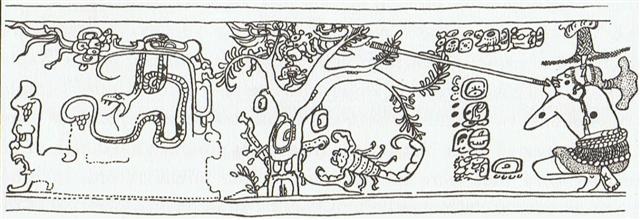
... This pot depicts one of the Hero
Twins (One-Ahaw in the Classic texts and
One-Hunaphu in the K'iche' Popol Vuh)
and a great bird who is trying to land
in a huge ceiba tree heavy with fruit.
This mythical bird is Itzam-Yeh,
Classic prototype of Wuqub-Kaqix,
'Seven-Macaw', of Popol Vuh fame.
In that story, in the time before the
sky was lifted up to make room for the
light, the vainglorious Seven-Macaw
imagined himself to be the sun. Offended
by his pride, the Hero Twins humbled him
by breaking his beautiful shining tooth
with a pellet from their blowgun. This
pot shows One-Ahaw aiming at the bird as
he swoops down to land in his tree. As
Itzam-Yeh lands on his perch, the
text tells us he is 'entering or
becoming the sky'. This particular
'sky-entering' is not the one mentioned
in the Palenque text. It is the final
event that occurred in the previous
creation before the universe was remade.
Before the sky could be raised and the
real sun revealed in all its splendor,
the Hero Twins had to put the false sun,
Itzam-Yeh, in his place. If the
date on this pot corresponds to that
pre-Creation event, as we believe it
does, then Itzam-Yeh was defeated
in 12.18.4.5.0 1 Ahaw 3 K'ank'in
(May 28, 3149 B.C.) ... |
|
CLOSE TO THE SUN: |
|
Nov 27 (148 + 183)
HAN = ζ Ophiuchi
(251.0) |
28 (332 = 149 + 183)
ζ Herculis, η Tr. Austr. (252.1), η
Herculis, β Apodis (252.5) |
29 (300 + 33)
ATRIA = α Tr. Austr.
(253.9) |
30 (*254 = *71 + *183)
Tail-6 (Tiger)
WEI (Tail) = ε Scorpii,
η Arae (254.3),
DENEBAKRAB = μ Scorpii
(254.7) |
The Pleiades were at the Full Moon
when the Sun was in November. On Easter Island the
Full Moon at the Pleiades implied the same kind of
season (the beginning of the summer year) as when
the Pleiades north of the equator was at the Sun in May. The
hot red summer was in front, with the cold wet
winter at the back side. A newborn has no hair and
neither has a newly hatched one any true feathers.
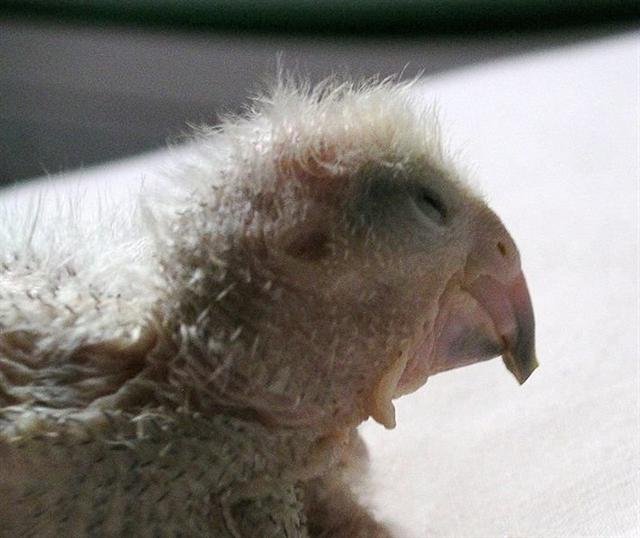
There is one more tapa mea
glyph on side a of the tablet, and we can guess why
this tapa mea was drawn reversed, because
here, at the time of rongorongo, the Old Winter Year (the
tanist of Hercules) was
ending (terminating). At the time of the Bull this
had been the northern winter solstice and the Old
Year ('the primordial homeland') was identified by the hairy wet Castor (Latin:
Castor Fiber
for Beaver) who culminated at this time of the
year:
... That there is a whirlpool in the sky is
well known, it is most probably the essential one, and
it is precisely located. It is a group of stars so named
(zalos) at the foot of Orion, close to Rigel
(beta Orionis, Rigel being the Arabic word for 'foot'),
the degree of which was called 'death', according to
Hermes Trismegistos, whereas the Maori claim outright
that Rigel marked the way to Hades (Castor indicating
the primordial homeland) ...

|
...
A man had a daughter who possessed a
wonderful bow and arrow, with which she
was able to bring down everything she
wanted. But she was lazy and was
constantly sleeping. At this her father
was angry and said: 'Do not be always
sleeping, but take thy bow and shoot at
the navel of the ocean, so that we may
get fire.' The navel of the ocean was a
vast whirlpool in which sticks for
making fire by friction were drifting
about. At that time men were still
without fire. Now the maiden seized her
bow, shot into the navel of the ocean,
and the material for fire-rubbing sprang
ashore.
Then the old man was glad. He kindled a
large fire, and as he wanted to keep it
to himself, he built a house with a door
which snapped up and down like jaws and
killed everybody that wanted to get in.
But the people knew that he was in
possession of fire, and the stag
determined to steal it for them. He took
resinous wood, split it and stuck the
splinters in his hair. Then he lashed
two boats together, covered them with
planks, danced and sang on them, and so
he came to the old man's house. He sang:
'O, I go and will fetch the fire.' The
old man's daughter heard him singing,
and said to her father: 'O, let the
stranger come into the house; he sings
and dances so beautifully.' The stag
landed and drew near the door, singing
and dancing, and at the same time sprang
to the door and made as if he wanted to
enter the house. Then the door snapped
to, without however touching him. But
while it was again opening, he sprang
quickly into the house. Here he seated
himself at the fire, as if he wanted to
dry himself, and continued singing. At
the same time he let his head bend
forward over the fire, so that he became
quite sooty, and at last the splinters
in his hair took fire. Then he sprang
out, ran off and brought the fire to the
people
... |
|
DEC 19 (*273 = *337 - *64) |
20 (354) |
SOLSTICE |
 |
 |
 |
|
Ca12-21 |
Ca12-22 |
Ca12-23 (339) |
|
te niu ku hakatu ua |
te maitaki - kupega
tuku hia mai |
mata hakatuu |
|
Tutu. 1.
Circle of fishing nets arranged in the
shape of a funnels or baskets. 2. To
light a fire; he-tutu i te ahi:
to burn something. 3. To hit, to strike,
to beat. Tûtú, to shake
(something) clean of dust or dirt;
he-tûtú te oone o te nua, to shake
the dirt off a nua cape.
Tutuhi, to reject the responsibility
for a mistake onto one another, to blame
one another for a mistake (see tuhi).
Tutuki, to stumble, to trip. O
tutuki te va'e, in order not to
trip. Tutuma, firebrand, partly
burnt stick. Tuturi, to kneel.
Vanaga. 1. To beat bark for cloth. PS
Pau., Mgv., Mq., Ta.: tutu, id.
Sa., To., Fu.: tutu, id. 2. A
broom, to sweep, to clean. Mq.: tutu,
to beat out the dust. 3. To shake, to
winnow. Mgv.: tutu, to tremble,
to leap. Mq.: tutu, to shake. 4.
To kindle, to light, to ignite, to set
fire, to burn. Mq.: tutu, to
burn, to set fire. 5. To stand;
hakatutu, to set joists. P Mgv.,
Mq.: tutu, to stand upright. Ta.:
tu, id. Tutua (tutu
1): board on which bark is beaten into
cloth. PS Mgv.: tutua, a cloth
beater. Mq., Ta.: tutua, wood on
which cloth is beaten. Sa., Fu.:
tutua, id. Tutui: tutui
ohio, chain, tutui kura,
shawl. Mq.: tuitui kioé, chain.
Tutuki: shock, contusion, to run
against, to collide; tukukia, to
run foul of. P Pau.: tukituki, to
strike, to pound, to grind. Mgv.:
tukia, to strike against, shock,
concussion. Mq.: tutuki, id. Ta.:
tui, id. Tutuma: 1. (tutu
- ma) a live coal. 2. Tree trunk
T (? tumu). Tutumata,
ligament of the eye, orbit, eyelid. T (tutumate,
eyelid G). Tutuu, bristling.
Churchill.
Tuu. 1. To
stand erect. 2. Mast, pillar, post. Van
Tilburg. 1. To stand erect, mast,
pillar, post; tuu noa,
perpendicular; tanu ki te tuu, to
set a post; hakatu tuu, to step a
mast; tuu hakamate tagata,
gallows; hakatuu, to erect, to
establish, to inactivate, to form,
immobile, to set up, to raise. P Mgv.,
Mq., Ta.: tu, to stand up. 2. To
exist, to be. Mgv.: tu, life,
being, existence. 3. To accost, to hail;
tuu mai te vaka, to hail the
canoe. Mgv.: tu, a cry, a shout.
4. To rejoin; tuua to be
reunited. 5. Hakatuu, example,
mode, fashion, model, method, measure,
to number. PS Sa.: tu, custom,
habit. Fu.: tuu, to follow the
example of. 6. Hakatuu, to
disapprove; hakatuu riri, to
conciliate, to appease wrath. 7.
Hakatuu, to presage, prognostic,
test. 8. Hakatuu, to taste. 9.
Hakatuu, to mark, index, emblem,
seal, sign, symbol, trace, vestige, aim;
hakatuu ta, signature; akatuu,
symptom; hakatuua, spot, mark;
hakatuhaga, mark; hakatuutuu,
demarcation. Churchill. 1. To arrive:
tu'u-mai. 2. Upright pole; to stand
upright (also: tutu'u). 3. To
guess correctly, to work out (the
meaning of a word) correctly:
ku-tu'u-á koe ki te vânaga, you have
guessed correctly [the meaning of] the
word. 4. To hit the mark, to connect (a
blow). 5. Ku-tu'u pehé, is
considered as... ; te poki to'o i te
me'e hakarere i roto i te hare,
ku-tu'u-á pehé poki ra'ura'u, a
child who takes things that have been
left in the house is considered as a
petty thief. Tu'u aro, northwest
and west side of the island. Tu'u
haígoígo, back tattoo. Tu'u
haviki, easily angered person.Tu'u-toga,
eel-fishing using a line weighted with
stones and a hook with bait, so that the
line reaches vertically straight to the
bottom of the sea. Tu'utu'u, to
hit the mark time and again. Tu'utu'u
îka, fish fin (except the tail fin,
called hiku). Vanaga. ... To the
Polynesian and to the Melanesian has
come no concept of bare existence; he
sees no need to say of himself 'I am',
always 'I am doing', 'I am suffering'.
It is hard for the stranger of alien
culture to relinquish his nude idea of
existence and to adopt the island idea;
it is far more difficult to acquire the
feeling of the language and to
accomplish elegance in the diction under
these unfamiliar conditions. Take for an
illustrative example these two sentences
from the Viti: Sa tiko na tamata e
kila: there are (sit) men who know.
Sa tu mai vale na yau: the goods
are (stand) in the house. The use of
tu for tiko and of tiko
for tu would not produce
incomprehensibility, but it would entail
a loss of finish in diction, it would
stamp the speaker as vulgar, as a white
man ... Savage life is far too complex;
it is only in rich civilization that we
can rise to the simplicity of elemental
concepts ... Churchill 2. |
|
CLOSE TO THE FULL MOON: |
|
February 21
μ
Gruis (337.0),
ε
Cephei (337.2), 1/325 Lac. (337.3),
ANCHA (Hip) =
θ
Aquarii
(337.4),
ψ
Oct.
(337.5), α Tucanae (337.9)
*296 = *337.4 - *41.4 |
22
Al Sa'ad al Ahbiyah-23 (Lucky Star of
Hidden Things) /
Shatabisha-25 (Comprising a Hundred
Physicians)
ε
Oct. (338.1),
ρ
Aquarii (338.2), 2/365 Lac. (338.5),
SADACHBIA =
γ
Aquarii
(338.6),
π
Gruis (338.9) |
23 (Terminalia)
β/172 Lac. (339.2), 4/1100 Lac. (339.4),
π Aquarii (339.5)
*298 = *339.4 - *41.4
CASTOR (α
Gemini)
|
|
... Al Sa'd al Ahbiyah
... has been interpreted the Lucky Star
of Hidden Things or Hiding-places,
because when it emerged from the sun's
rays all hidden worms and reptiles,
buried during the preceding cold, creep
out of their holes!
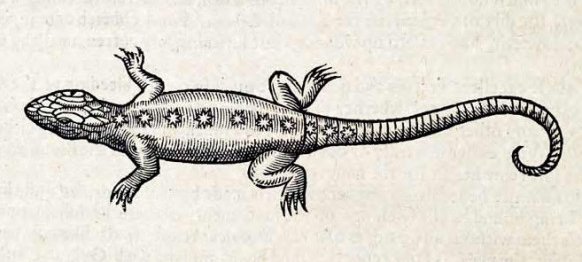 |
But Pleiades at tapa mea
not reversed was drawn in Cb2-6:
|
80 |
 |
 |
 |
 |
|
Cb2-4
(420 = 54 + 366) |
Cb2-5 |
Cb2-6 (56 + 366) |
Cb2-7 |
|
te ua |
koia ra |
kua tuku ki to
mata - ki tona tukuga |
e kiore - henua -
pa rei |
|
Uha. Hen;
female (familiar): taaku uha = taaku
vî'e, my wife, or my daughter (i.e.
taaku poki). Vanaga. Female. T
Pau.: koufa, female of animals.
Mq.: uha. id. Ta.: ufa,
uha, id. Ma.: uwha, uha,
id. Uhamau (uha - mau
7), to brood, to hatch. Churchill.
Tonga, Niuē:
uha, rain. Viti: utha,
rain. Churchill 2.
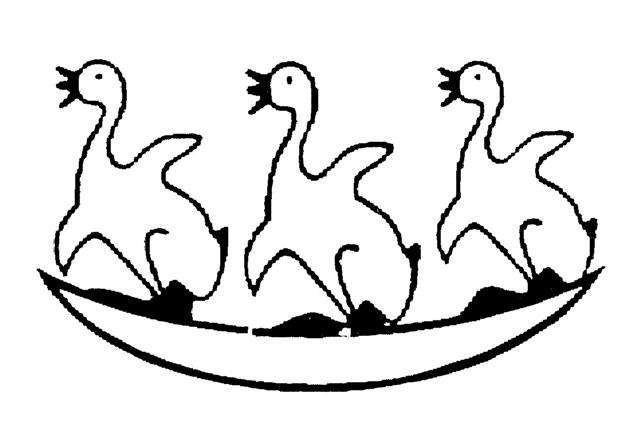
Ua. 1. Cause,
reason why something happens or is done;
he ûa te ua, au i-ta'e-iri-ai ki
tooku hare, because of the rain, I
did not go home; ua kore, without
cause, without reason. 2. Ceremononial
stave with a human face carved at one
extremity. Vanaga. Cfr toko. 1. A
long club T. 2. Mgv.: ua, the
genitalia. Ta.: hua, id. Mq.:
hua, id. Ha.: hua, testicles.
3. Ta.: ua, the back of the neck.
Ma.: ua, id. Sa.: ua, the
neck. 4. Ta.: ua, a land crab
which shears iron. Ma.: uka,
lobster. Sa.: uga, the hermit
crab. Churchill.
Ûa. Rain; 1.
ûa hakamito, persistent, but not
strong, rain; 2. ûa kura, fine
rain, drizzle; 3. ûa matavaravara,
strong rain; 4. ûa parera,
torrential rain; 5. ûa tai, rain
followed by fair weather at sea. Ehu
ûa, drizzle. Vanaga.
Ûaûa.
Tendons, muscles. 1. Hau ûaûa kio'e,
line made from rats' tendons. 2.
Ûaûa toto, vein, artery. 3. Ûaûa
piki, spasm. Vanaga. 1. Rain; hoa
mai te ua, to rain; mou te ua,
to cease raining. P Mgv., Mq., Ta.:
ua, rain. 2. Vein, artery, tendon (huahua
1) (uha
G); ua
nene,
pulse;
ua nohototo, artery,
ua gaei,
pulse.
Uaua, vein, tendon, line;
kiko
uaua, muscle T.
Hakauaua,
to mark with lines. P Pau.:
tare-ua,
tendon. Mgv., Mq., Ta.:
uaua,
vein, tendon. Churchill.
U'a. Of the
tide, to reach its maximum; tai u'a,
high tide. Vanaga. Wave, surge;
tai ua, high tide. Churchill.
Uá. Ata uá, morning twilight.
Uáuá, to
reside; resident; noho uáuá to
settle somewhere; ina koe ekó noho
uáuá, do not establish yourself
there. Vanaga.
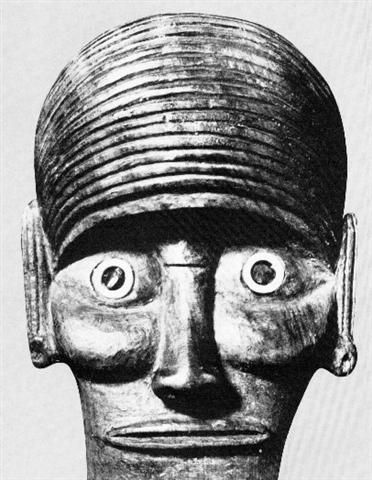 |
|
CLOSE TO THE FULL MOON: |
|
May 14 (80 + 54 = 134)
no star listed (54 = 420 - 366) |
15 (365 + 135 = 500)
Al Thurayya-27 (Many Little Ones) /
Krittikā-3 (Nurses of Kārttikeya) /
TAU-ONO (Six Stones)
ATIKS =
ο Persei,
RANA (Frog) =
δ
Eridani
(55.1),
CELAENO (16 Tauri), ELECTRA (17), TAYGETA
(19),
ν
Persei (55.3),
MAIA (20), ASTEROPE (21), MEROPE (23)
(55.6) |
16 (136)
Hairy Head-18 (Cockerel) /
Temennu-3 (Foundation Stone)
ALCYONE
(56.1),
PLEIONE (28 Tauri), ATLAS (27 Tauri)
(56.3) |
17
MENKHIB (Next to the Pleiades =
ζ
Persei
(57.6)
PORRIMA (γ Virginis) |
|
CLOSE TO THE SUN: |
|
Nov 13 (134 + 183 = 317)
κ Librae (237.2), ι Serpentis
(237.4), ψ² Lupi, ρ Oct. (237.5), γ
Cor. Borealis, η Librae (237.7), COR
SERPENTIS = α Serpentis
(237.9)
*196 = *237.4 - *41.4 |
14
π Cor. Borealis,
UNUK ELHAIA (Necks of the Serpents)
= λ Serpentis
(238.1),
CHOW = β Serpentis
(238.6) |
15
κ Serpentis (239.3), δ Cor.
Borealis,
TIĀNRŪ = μ Serpentis
(239.5), χ Lupi, (239.6), ω
Serpentis (239.7),
BA (= Pa) = ε Serpentis,
χ Herculis (239.8). κ Cor. Borealis,
ρ Serpentis (239.9) |
16 (*240)
λ Librae (240.0), β Tr. Austr.
(240.3), κ Tr. Austr. (240.4), ρ
Scorpii (240.8)
*199 = *240.4 - *41.4 |
When the Sun reached Alcyone in May 16
(136 = 500 - 364) this was traditionally regarded as the day when the
year was beginning with nice weather arriving. On Easter Island the
corresponding season should have been when Alcyone was at the
Full Moon in November 15.
...
another Alcyone, daughter of Pleione, 'Queen of
Sailing', by the oak-hero Atlas, was the mystical
leader of the seven Pleiads. The heliacal rising of
the Pleiads in May marked the beginning of the
navigational year; their setting marked its end when
(as Pliny notices in a passage about the halcyon) a
remarkably cold North wind blows
...
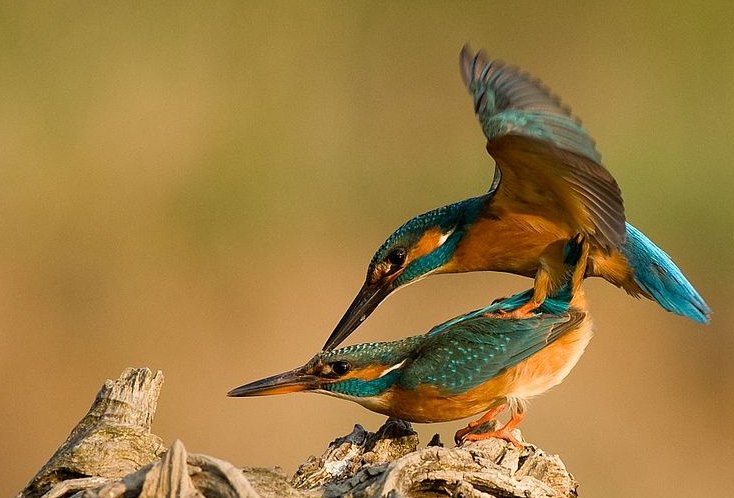

... The Mahabharata insists on six as
the number of the Pleiades as well as of the mothers
of Skanda and gives a very broad and wild
description of the birth and the installation of
Kartikeya 'by the assembled gods ... as their
generalissimo', which is shattering, somehow,
driving home how little one understands as yet. The
least which can be said, assuredly: Mars was
'installed' during a more or less close conjunction
of all planets; in Mbh. 9.45 (p. 133) it is stressed
that the powerful gods assembled 'all poured water
upon Skanda, even as the gods had poured
water on the head of Varuna, the lord of
waters, for investing him with dominion'. And this
'investiture' took place at the beginning of the
Krita Yuga, the Golden Age
...
When Maui first turned into a
kiore this was not a suitable form for entering into
Hine Nui te Po, and neither was the toke, and instead a kind of
moko
with huruhuru was chosen as a better option
for success:
... Maui
at first assumed the form of a kiore, or rat,
to enter the body of Hine. But tataeko,
the little whitehead, said he would never succeed in
that form. So he took the form of a toke, or
earth-worm. But tiwaiwaka the fantail, who
did not like worms, was against this. So Maui
turned himself into a moko huruhuru, a kind
of caterpillar that glistens. It was agreed that
this looked best, and so Maui started forth,
with comical movements ...
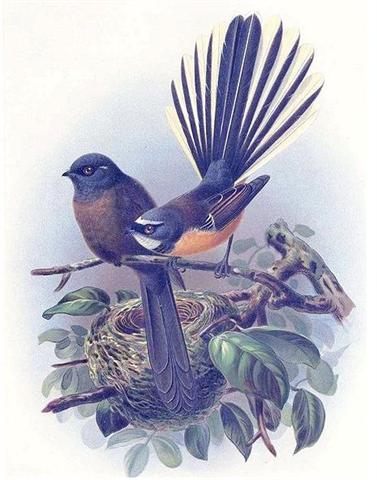
The hairy rat was an indication of the
beginning of the wet cold winter year and therefore
quite unsuitable.
... In China, with Capricornus, Pisces, and a part
of Sagittarius, it [Aquarius] constituted the early
Serpent, or Turtle, Tien Yuen; and later was
known as Hiuen Ying, the Dark Warrior and
Hero, or Darkly Flourishing One, the Hiuen Wu,
or Hiuen Heaou, of the Han dynasty, which
Dupuis gave as Hiven Mao. It was a symbol of
the emperor Tchoun Hin, in whose reign was a
great deluge; but after the Jesuits came in it
became Paou Ping, the Precious Vase. It
contained three of the sieu, and headed the list of
zodiac signs as the Rat, which in the far
East was the ideograph for 'water', and still so
remains in the almanacs of Central Asia, Cochin
China, and Japan ...
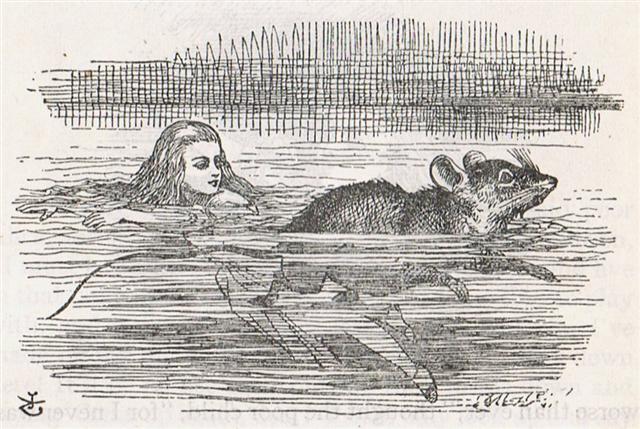
And toke implied Mercury (Hermes,
Whiro, Hiro, Hilo,
the god of thiefs):
... Toke.
To steal; thief;
toketoke, to repeatedly steal things of little
value; vî'e toke kenu, adulterous woman
(lit.: woman who steals husbands). Vanaga. Toke.
To dupe, to extort, to usurp; toketoke, to
steal, to rob, to extort, to defraud, to spoil,
thief. Tokea, a dupe. Tokenoho,
intruder. Churchill.
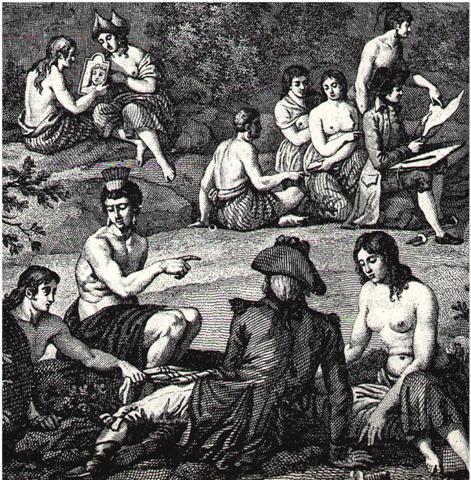
On Easter Island it was the custum (huru)
for all the peoples to come together in order to give
feathers to the King at the June solstice. Feathers
(like the fleece of a ram) gave
warmth:
... The cult place of Vinapu is located
between the fifth and sixth segment of the dream
voyage of Hau Maka. These segments, named 'Te
Kioe Uri' (inland from Vinapu) and 'Te
Piringa Aniva' (near Hanga Pau Kura)
flank Vinapu from both the west and the east.
The decoded meaning of the names 'the dark rat'
(i.e., the island king as the recipient of gifts)
and 'the gathering place of the island population'
(for the purpose of presenting the island king with
gifts) links them with the month 'Maro',
which is June. Thus the last month of the Easter
Island year is twice connected with Vinapu.
Also, June is the month of summer solstice [a
mistake: south of the equator it is winter
solstice], which again points to the possibility
that the Vinapu complex was
used for astronomical purposes ...
... Huru.
Custom, tradition,
behaviour, manners, situation,
circumstances; poki huru hare, child who
stays inside (to keep a fair complexion); te huru
o te tagata rivariva, a fine person's behaviour;
pehé te huru o Hiva? what is the situation on
the mainland? Huruhuru, plumage,
feathers (the short feathers, not the tail
feathers), fleece of sheep. Vanaga. Samoa:
sulu, a torch; to light by a torch; sulusulu,
to carry a torch; susulu, to shine (used of
the heavenly bodies and of fire). Futuna: susulu,
the brightness of the moon. Tonga: huluaki,
huluia, huluhulu, to light, to
enlighten; fakahuhulu, to shine; iuhulu,
a torch or flambeau, to light with a torch. Niuē:
hulu, a
torch; huhulu,
to shine (as the moon). Maori: huru,
the glow of the sun before rising, the glow of fire.
Churchill 2.
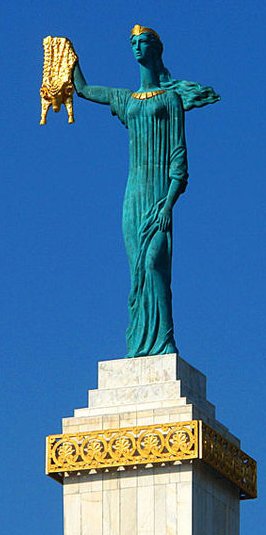
... When Old Spider
found the giant clam it was
inhabited not only by the pair of
snails which became the (Full) Moon
and the Sun but most importantly by
a big worm, named Rigi
- which, acccording to my source (I just
found out) the Naurus identified with a butterfly,
i.e. this big worm Rigi was a kind of
caterpillar, presumably a moko
huruhuru ...
... A butterfly is an insect
of the order Lepidoptera. Like all
Lepidoptera, butterflies are notable for their
unusual life cycle with a larval caterpillar stage,
an inactive pupal stage, and a spectacular
metamorphosis into a familiar and colourful winged
adult form ...
According to the 'Butterflies' chapter in
Kwaidan: Stories and Studies of Strange Things,
by Lafcadio Hearn, a butterfly is seen as the
personification of a person's soul; whether they be
living, dying, or already dead ... The Ancient Greek
word for 'butterfly' is ψύχη (psychē), which
primarily means 'soul', 'mind' ... The Taoist
philosopher Zhuangzi once had a dream of being a
butterfly flying without care about humanity,
however when he woke up and realized it was just a
dream, he thought to himself 'Was I before a man who
dreamt about being a butterfly, or am I now a
butterfly who dreams about being a man?' In some old
cultures, butterflies also symbolize rebirth into a
new life after being inside a cocoon for a period of
time ...

|































